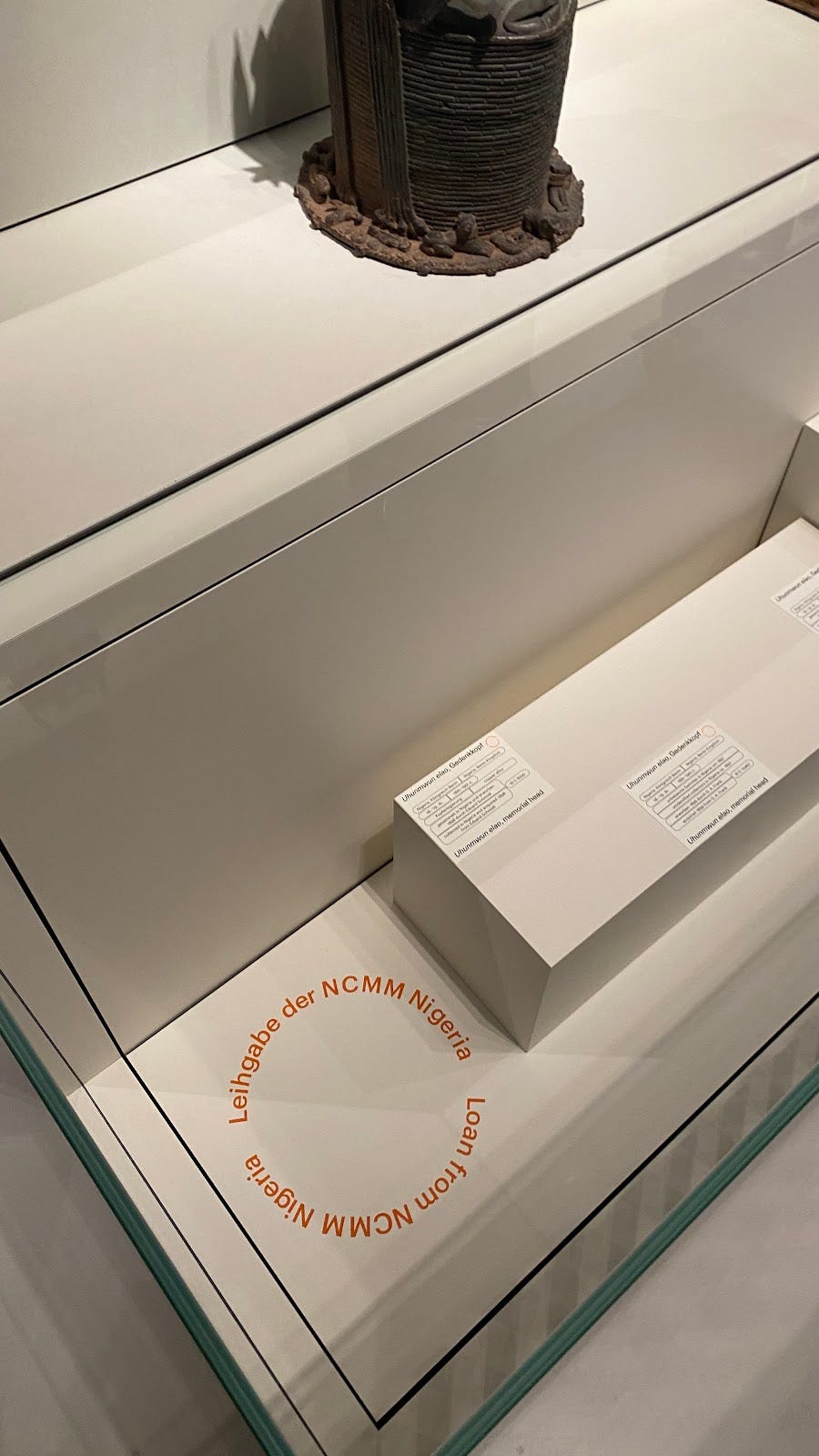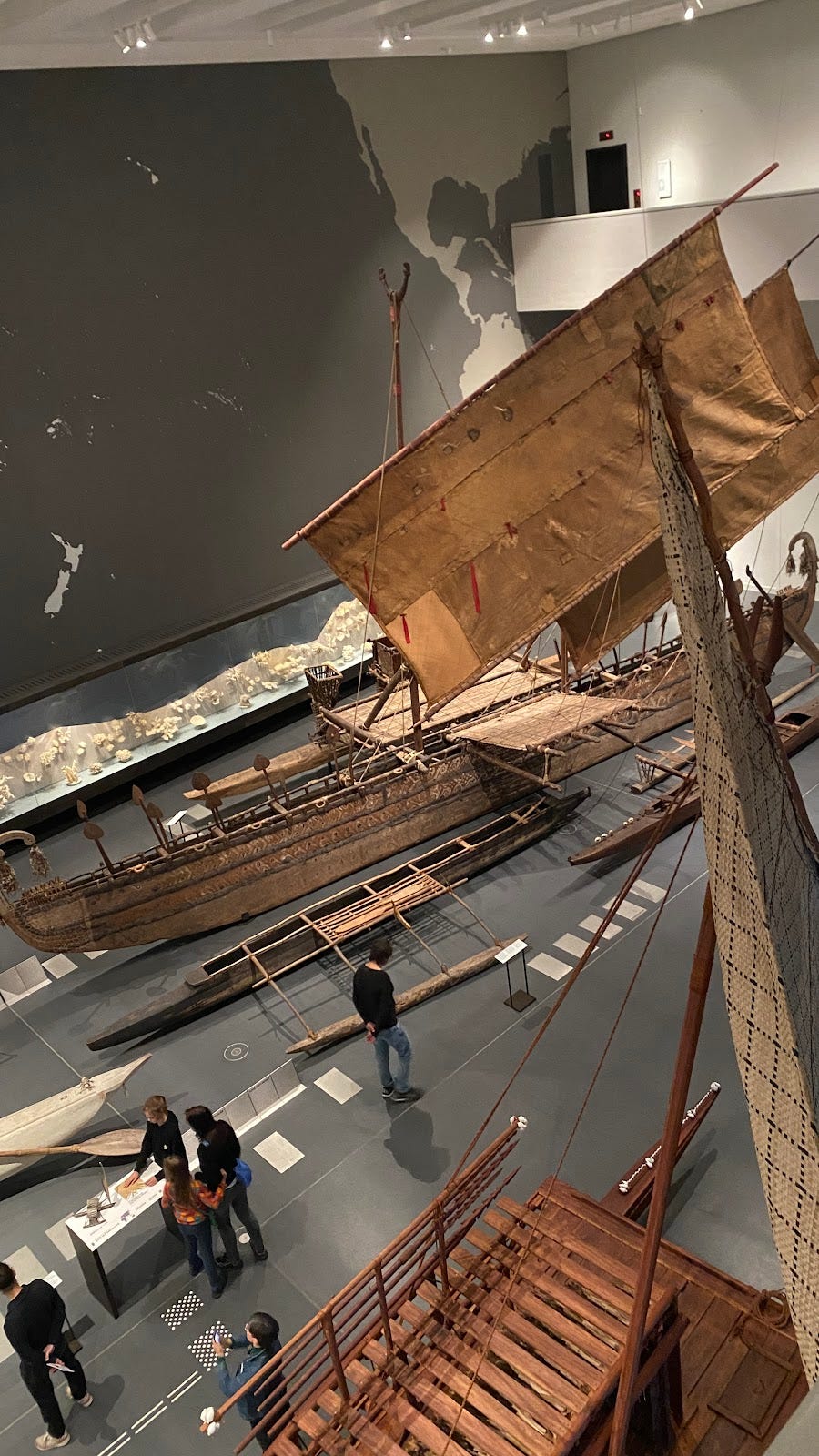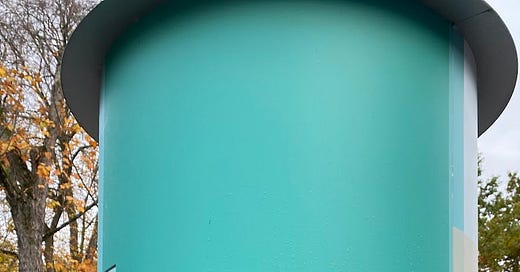A civilization that proves incapable of solving the problems it creates is a decadent civilization. A civilization that chooses to close its eyes to its most crucial problems is a stricken civilization. A civilization that uses its principles for trickery and deceit is a dying civilization. ― Aimé Césaire, Discourse on Colonialism
The Humboldt Forum conjures up many layers of memory for German audiences. Standing on the site that was once the Royal Palace of Berlin and later a building dedicated to the GDR’s propaganda machine, and linked to controversies about stolen collections and the role of private investors in public projects, the Forum is ripe with contested meanings. As we know from our own work in Baltimore, historians are not the only ones invested in the project of memory-making. From tour guides, to politicians, urban planners, museum workers, educators and more, many contribute to the work of remembering and meaning-making.
For our workshop participants, and for members of the Hard Histories research team, Germany had long stood as a model for memory work for how it had confronted and reckoned with the history of the Holocaust in very public ways. As Martha S. Jones reminded readers of this Substack a few months ago, the city of Berlin had long been an inspiration for our work. Dr. Ariela Gross also reminded us during “Live from Berlin: A Webinar” that she had had an image of German memory-work as a model, and only later saw firsthand the debates, criticism and contests over that model voiced in Berlin. Among the topics at the heart of the most-recent challenge to Germany’s historical memory is the subject of colonialism, and what some have deemed to be a form of “Colonial Amnesia” in Germany. Recently, for instance, streets that had once been named after prominent agents of colonialism, or used racist terminology, have been renamed in different areas of Berlin.

Renaming is not an act of erasure; it does not encourage the forgetting of the history of German colonialism. Rather, renaming calls for a different type of remembrance. The recently opened Humboldt Forum is at the heart of similar memory work, and is also at the center of critiques relating to the telling of Germany’s colonial history in Africa and Oceania. The museum, made up of four institutions including the Berlin City Museum, blends under one roof the former Ethnological Museum and the Museum of Asian Art. The cultural objects on display are from peoples and countries around the world, and many of them made their way to Berlin through hard histories of looting, violence, colonial dispossession and broken treaties. The team we met with at the Humboldt was aware of that history and tackled its legacy head on. Some of the exhibits, like that of the “Benin Bronzes,” are at the heart of restitution processes. As the political conversation around the objects has changed, so too has the display itself.

Our host explained that one of the solutions for the curatorial team was to develop an interactive and flexible display, one that left room for groups of students to workshop exhibits, and one that allowed for absences and empty spaces where stolen objects once were. The space is always under construction and allows for improvisation, with the help of educators from Benin City. Where looted objects once stood, the visitor is now faced with a wall of videos with talking heads (museum curators, political and cultural actors from Benin City and the Nigerian government.) The bronzes, once claimed as the property of the German state, are now the property of the Nigerian government, which allows the Forum to display them.

The restitution and repatriation of cultural objects are not straightforward projects, our hosts explained. One of the challenges is that repatriation still relies heavily on the framework of the nation. What happens then when no national entity can be identified as the rightful owner? What of objects which rightfully belong to a wider diaspora that transcends national boundaries? That issue was raised for instance in the debates surrounding the outrigger boat from the island of Luf -- part of the Hermit Islands in the Bismarck Archipelago, under the sovereignty of Papua New Guinea. The boat was most likely stolen by the German company Hernsheim & Co. in the early 20th century in the midst of violent “punitive expeditions” enforced by German colonial forces. Although there were claims from the company that it had been bought, there was no evidence of a lawful purchase. The ship has not been restored to Luf island, which is now inhabited. Still, descendants of the ship makers, in the neighboring island of Manus, have asked that the boat be returned to them.

“The way forward,” as one of our hosts hoped, is the building of lasting relationships between the museum and the populations whose “cultural belongings” are displayed. One example is the collaborative exhibition of belongings of the Omaha people of Nebraska, entitled “Against the Current. The Omaha, Francis La Flesche and his Collection” with the following subtitle -- “We Talk, You Listen!” “We,” being the Omaha people. The team at the Humboldt gave representatives of the Omaha in Nebraska, as well as educators from the Nebraska Community College, complete control over the design and message of the exhibit, from the selection of objects to video clips sharing difficult stories of displacement, violence and dispossession. These types of collaborative exhibits, which place authority and ownership back in the hands of the people whose belongings have been looted, stolen, or sold, require time to develop, more so than other forms of curatorship. They also require trust. Restitution, we learned, is only one facet of the work of addressing the history and legacy of colonialism. Changing museums in a profound and lasting way, is a longer and more challenging process.
Today, the Humboldt Forum seeks to disrupt and build upon the many layers of memory that undergird it.1 As the team shared with us, they aim for the space to be an embodiment of democracy. Another curator put it plainly: “My job is to criticize my institution.” That process of self-examination is critical to the work we do at Hard Histories, and it is one we share with our colleagues in Europe and elsewhere. Next week I will share some of the lessons that emerged from our meetings in Paris and Berlin on the topic of institutional criticism and self-examination. What is the relationship of the scholar to their institution? How do we relate to our universities, our cities, and ourselves?
– Malaurie
Care to read further? We can recommend the following -- On the site of today's Humboldt Forum as a "reminder of uncomfortable pasts,"see, Nick Hodgin, "Construction, Demolition, Extirpation? The Palast Der Republik and the Conflicting Desires of German Unification," German Life and Letters 77, no. 2 (April 2024): 238-262. Also see, Adrian von Buttlar, "Berlin's Castle Versus Palace: A Proper Past for Germany's Future?" Future Anterior: Journal of Historic Preservation, History, Theory, and Criticism 4, no. 1 (Summer 2007): 12-29; Dominik Bartmanski, Matters of Revolution: Urban Spaces and Symbolic Politics in Berlin and Warsaw After 1989 (Routledge, 2022); and, Emily Pugh, Architecture, Politics, & Identity in Divided Berlin (University of Pittsburgh Press, 2014); Carol Anne Costabile-Heming, "The reconstructed City Palace and Humboldt Forum in Berlin:Restoring architectural identity or distorting the memory of historic spaces?", Journal of Contemporary European Studies, 25/4 (2017), 441–54; and, Susanne Ledanff, "The Palace of the Republic versus the Stadtschloss. The Dilemmas of Planning In the Heart of Berlin", German Politics and Society 21 (2004), 30–73; Freidrich von Bose, "The Making of Berlin's Humboldt-Forum: Negotiating History and the Cultural Politics of Place,"Afterlives (November 2013).


